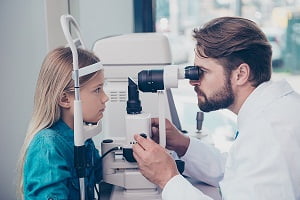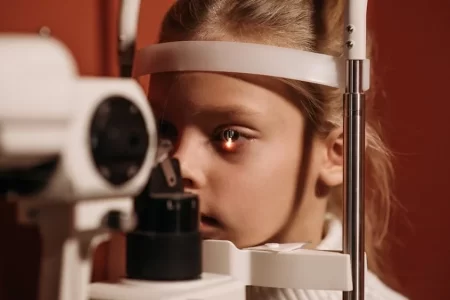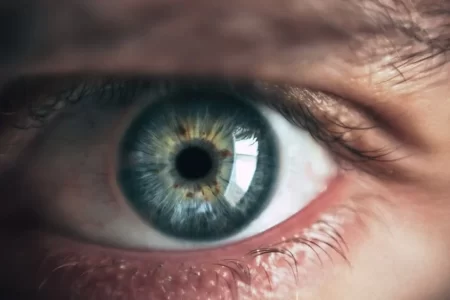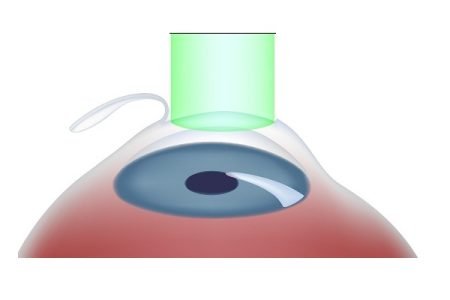How Is Myopia (Nearsightedness) Diagnosed?
- Updated on: Jul 2, 2024
- 3 min Read
- Published on Oct 3, 2019

Diagnosis of Nearsightedness (Myopia)
Myopia is easily detected and diagnosed in an eye examination by an ophthalmologist. The diagnosis of myopia or nearsightedness is done by the ophthalmologist in a series of tests which also detect the intensity of the disorder and ways to correct the myopic condition.
Test for diagnosing and detecting myopia
The tests performed to diagnose it are as follows:
Refraction Or Vision Test
An alphabetic chart in which numbers or letters getting small progressively is placed both near and far away from a person. The person is asked to read the alphabets so as to test vision clarity of the person. One eye is checked at a time and other one is kept closed.
The test helps in knowing the correct lenses and glasses to treat the vision defect if any. If myopia is detected, other tests may be done to detect the cause for nearsightedness.
A device called Phoropter is used by the ophthalmologist during the vision test. It includes a series of lenses that are placed in front of the eye of the patient to check the power of lenses required to correct the vision defect such as near and far sightedness.
Retinoscope is used to direct light rays on your eyes and check how your eyes respond to the light so as to detect any abnormal responses and also detect any signs of disorder.
Retinal Examination
Examination of retina through retinoscope is done if myopia is indicated by the vision test. A retinoscope is used to shine light on the retina and the reflection of light off the retina is observed. The pupil is dilated by putting eye drops in the eye before the test. Eye drops help in dilating the pupil which provide wide area to examine the retina.
Slit Lamp Test
This test is done to see the structure of front portion of the eye so as to detect any structural abnormality such as any eyeball enlargement or too much curvature in the cornea which are possible reasons for myopia.
The front part of the eye is seen under magnification. Slit lamp microscope is used for this purpose. The microscope is called a slit lamp type because an intense line of light is used and slit to illuminate the structure of cornea, eye lens, iris and spaces between the cornea and iris and also helps in viewing the structure of eye in small sections which allow detection of any small eye abnormalities.
Tonometry
This test is done to check pressure in the eyes. Tonometer is used to measure the intraocular pressure. Eyes are numbed by putting numbing eye drops prior to this test. This test is also done to screen glaucoma by measuring the intraocular pressure.
Color Vision Test
This test is done to detect the ability of a person to distinguish between colors so as to detect any color blindness.
Regular eye examination is necessary to keep track of any defect and disorder of the eye. It also helps in detecting any vision related disorders like myopia at an early stage so that by using appropriate lenses, glasses the sight can be saved and other signs which occur due to the disorder such as eye strains, fatigue in the eyes can be prevented. Read more about treatment of myopia.
How you understand your glass prescription?
If nearsightedness or myopia is detected in the eye test, you are prescribed prescription lenses. Your prescription will describe the type of lenses needed to correct the vision. The prescription is used further to design glasses or contact lenses according to your preference.
The prescription contains three main numbers for both eyes which are as listed here:
- Sph (Spherical) – Number written here is indicated by positive and negative signs. The positive sign indicates farsightedness and negative sign with a number indicates nearsightedness. If short sightedness is detected, the Sph number is given in diopter (D). The number of Sph depend upon the progression and severity of myopia. Sph number in dioptres for different myopia stages are:
- Mild– For mild Sph it is -0.25 to -3 D
- Moderate –For moderate myopia the range is – 3.25 to 6 D
- Severe – If you are severely myopic, the Sph number will be: -6.25 D and above
- Cyl or Cylinder – This number indicates whether you are suffering from astigmatism, a disorder of eye in which front part of the eye gets perfectly curved.
- Axis depicts the angle of astigmatism.













1 Comment
If some one wishes expert iew aboyt runnijg a blogg afterward i suggest him/her tto go tto seee this web site, Keep up the
fasgidious work.